Lard’s out, now what? Swap it, that’s what. In the kitchen, flexibility is key.
You’re whipping up a storm, and bam, no lard in sight. It’s cool. We’ve all been there.
Today, we’re here to flip the script on that oh-so-traditional ingredient. Think lard’s irreplaceable?
Think again. We’re digging into five stellar swaps that’ll keep your dishes on point without missing a beat.
Butter, oils, and even some surprises are queued up to save your bacon (pun intended).
Ready to turn a potential cooking crisis into your next great dish? Let’s get into it.
What is Lard?

When most people think of cooking fats, lard is one of the first to mind.
It is a type of fat that is rendered from pork or beef.
It has a high smoke point and a neutral flavor, which means it’s great for cooking.
Unlike other oils, lard doesn’t have a strong taste, so your food will taste the way it’s supposed to.
Lard is also shelf-stable and doesn’t need to be refrigerated, making it a good option for those who go camping or are involved in outdoor activities.
Lard is great as an all-purpose cooking fat, but what’s the background behind this favorite fat? Lard has been around since the beginning of humankind and was used by our ancestors to cook and protect themselves from harsh weather conditions.
The benefits of lard have been touted for years, but recently with the rise of low-fat diets, it has lost a bit of its popularity.
However, there has been a renewed interest in cooking with lard in recent times because it is a healthier alternative to other types of cooking fats and oils.
So, if you’re looking for a new way to add flavor and depth to your favorite dishes, consider giving lard a try.
The 5 Best Substitutes for Lard
Since lard is such a versatile cooking fat, you’ll want to use it as often as possible.
There are times, though, when you can’t or don’t want to use it (such as if you’re trying to watch your cholesterol).
Here’s a detailed comparison of the 5 best substitutes for lard, along with their key characteristics and proper ratios:
| Substitute | Key Characteristics | Proper Ratio |
|---|---|---|
| Butter | Butter is a popular substitute for lard, especially in baking. It adds flavor and richness to recipes and can be used as a 1:1 replacement. | Use an equal amount of butter as you would with lard in your recipe. |
| Coconut Oil | Coconut oil is a plant-based substitute for lard. It has a mild flavor and can be used in both cooking and baking. | Use an equal amount of coconut oil as you would with lard in your recipe. |
| Shortening | Shortening is a solid fat made from vegetable oils. It has a high melting point, making it suitable for baking and frying. | Use an equal amount of shortening as you would with lard in your recipe. |
| Vegetable Fat | Vegetable fat is a generic term that includes various types of plant-based fats, such as palm or soybean oil. It can be used as a lard substitute. | Use an equal amount of vegetable fat as you would with lard in your recipe. |
| Margarine | Margarine is a spread made from vegetable oils. It is a suitable substitute for lard in many recipes, including baking and cooking. | Use an equal amount of margarine as you would with lard in your recipe. |
Now, let’s discuss each substitute in more detail:
1 – Butter
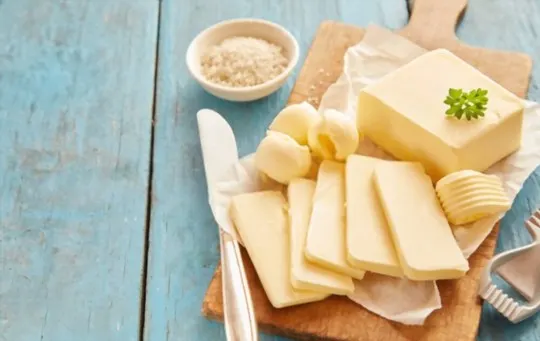
Another common substitution for lard is butter.
The best way to do this with fatback is by using it in equal quantities.
You can also use half butter and half shortening or three-quarters of a cup of each to every one cup of lard that’s needed.
This type of cooking has become very popular recently, and it is especially common in French and Italian homes.
This new type of cooking has gained a lot of steam and even some renown, and some people use butter as lard while others make compound butter; this may be because they want to add more taste or flavor.
2 – Coconut Oil
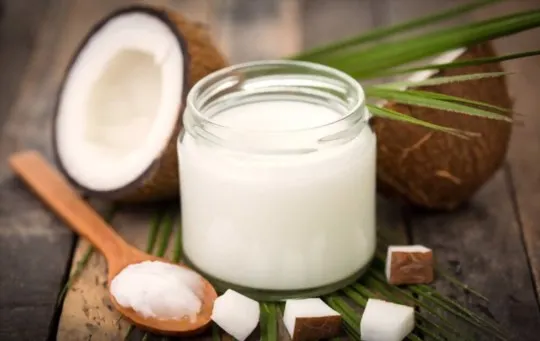
Coconut oil is a popular choice as a replacement for lard.
It is an easily attainable type of oil and can be found in most grocery or health food stores.
The best way to substitute coconut oil for lard is by using equal amounts, but it’s important to remember that the flavor will change slightly since this type of fat doesn’t have as neutral of a flavor as lard does.
Coconut oil is incredibly versatile and can be used in most recipes that call for lard.
It has become popular worldwide, but it has gained its popularity greatly in Western countries because of health concerns with animal products or hydrogenated oils (including margarine).
3 – Shortening
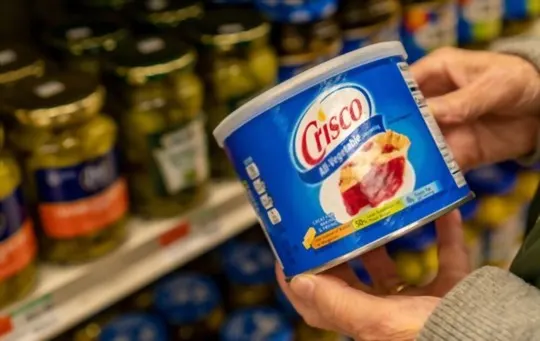
Shortening is another viable substitute for lard that you can use.
There are a few important things to keep in mind when using shortening, including how it behaves differently during the cooking process than lard does.
For example, it won’t provide the same flakiness or crispy texture since it’s made so that it doesn’t melt until very high temperatures.
Shortening is a product made from vegetable oils, and for this reason, it has gained popularity among vegetarians and vegans alike.
Many who shun animal products have been using shortening as their lard substitute even though they know that it’s not the healthiest of fats.
The good news is that some types of shortening are made with healthy oils, such as olive oil or canola oil.
4 – Vegetable Fat
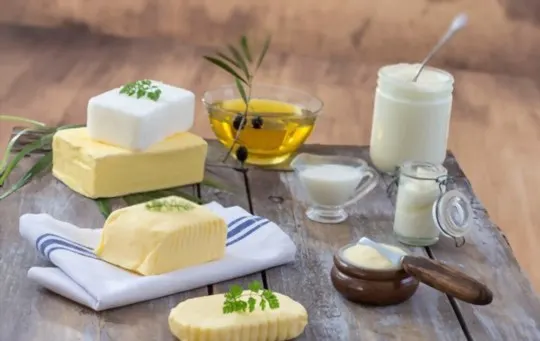
Another good substitute for lard is vegetable fat, which has recently gained popularity since it provides a flavor and texture similar to lard without negative health effects.
It’s important to note, though, that the frying temperatures will be different when using vegetable fat as a substitute.
Unlike lard or shortening, which doesn’t liquefy until very high temperatures, vegetable fat starts to melt at a much lower temperature.
This means that you’ll want to use it in recipes where the temperature will stay relatively low during cooking.
Using vegetable fat as a substitute for lard helps you avoid unhealthy ingredients and provides a flavor and texture that is very similar to what you get with lard.
It’s perfect for those who have been cooking with lard their entire lives and want to cut back on animal products or saturated fats from animal sources without sacrificing taste or texture.
5 – Margarine
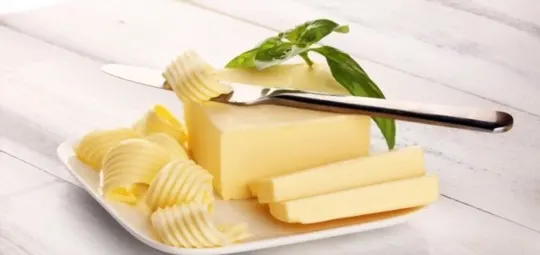
Some people use margarine as a substitute for lard because it’s another easily accessible option for those who don’t want to cook with animal products.
It has the same properties as shortening when used as a replacement.
Although margarine is not as popular as vegetable fat or coconut oil, it is still a good substitute for lard because of its low cost and many varieties that allow you to use different flavors if desired.
Many people will consider margarine an alternative to lard since it has the same properties and texture when used in cooking and baking.
Margarine also comes with no cholesterol or saturated fats, which are two of the main ingredients found in animal lard.
If you’re looking for a substitute for lard that works just as well but doesn’t have the same health concerns, margarine is an excellent choice.
Conclusion
Lard is a cooking fat that has been used for many years and is especially popular in the United States.
Lard is very versatile, so it can be used in recipes to add moisture or flavor.
However, lard has some health concerns, such as high hydrogenated fats and cholesterol.
Depending on what you’re looking for in cooking fat, there are many different options that you can choose from.
These top five substitutes for lard include shortening, vegetable fat, margarine, coconut oil, and olive oil.
Each has unique properties that make it an excellent substitute for animal-based lard.
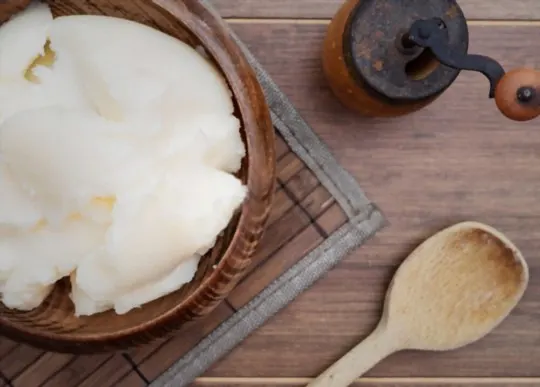
The 5 Best Substitutes for Lard
Ingredients
- Butter
- Coconut Oil
- Shortening
- Vegetable Fat
- Margarine
Instructions
- Pick your favorite substitute from the list above.
- Follow cooking directions for your selected substitute with the proper ratio of ingredients.

Andrew Gray is a seasoned food writer and blogger with a wealth of experience in the restaurant and catering industries. With a passion for all things delicious, Andrew has honed his culinary expertise through his work as a personal chef and caterer.
His love for food led him to venture into food writing, where he has contributed to various online publications, sharing his knowledge and insights on the culinary world. As the proud owner of AmericasRestaurant.com, Andrew covers a wide range of topics, including recipes, restaurant reviews, product recommendations, and culinary tips.
Through his website, he aims to inspire and educate fellow food enthusiasts, offering a comprehensive resource for all things food-related.

Leave a comment